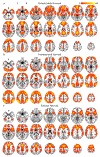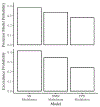Impaired salience network switching in psychopathy
- PMID: 37421987
- PMCID: PMC10527938
- DOI: 10.1016/j.bbr.2023.114570
Impaired salience network switching in psychopathy
Abstract
Growing evidence suggests that psychopathy is related to altered connectivity within and between three large-scale brain networks that support core cognitive functions, including allocation of attention. In healthy individuals, default mode network (DMN) is involved in internally-focused attention and cognition such as self-reference. Frontoparietal network (FPN) is anticorrelated with DMN and is involved in externally-focused attention to cognitively demanding tasks. A third network, salience network (SN), is involved in detecting salient cues and, crucially, appears to play a role in switching between the two anticorrelated networks, DMN and FPN, to efficiently allocate attentional resources. Psychopathy has been related to reduced anticorrelation between DMN and FPN, suggesting SN's role in switching between these two networks may be diminished in the disorder. To test this hypothesis, we used independent component analysis to derive DMN, FPN, and SN activity in resting-state fMRI data in a sample of incarcerated men (N = 148). We entered the activity of the three networks into dynamic causal modeling to test SN's switching role. The previously established switching effect of SN among young, healthy adults was replicated in a group of low psychopathy participants (posterior model probability = 0.38). As predicted, SN's switching role was significantly diminished in high psychopathy participants (t(145) = 26.39, p < .001). These findings corroborate a novel theory of brain function in psychopathy. Future studies may use this model to test whether disrupted SN switching is related to high psychopathy individuals' abnormal allocation of attention.
Keywords: Dynamic causal modeling; MRI; Neuroimaging; Psychopathy; Salience network.
Copyright © 2023 Elsevier B.V. All rights reserved.
Conflict of interest statement
Declaration of Competing Ineterest The authors declare no competing financial interests.
Figures




References
-
- Hare RD, The Hare psychopathy checklist-revised, Multi-Health Systems, Toronto, 2003.
Publication types
MeSH terms
Grants and funding
LinkOut - more resources
Full Text Sources
Research Materials

